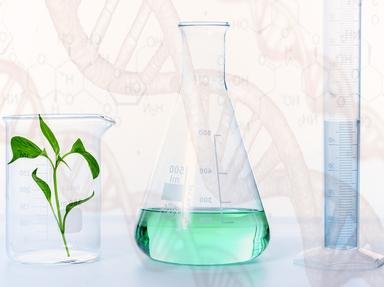Quiz Answer Key and Fun Facts
1. Given the reaction A ----> products , governed by the rate law v = k*[A] , which of the following statements are true ?
1. k will increase when adding a catalytic agent
2. k will increase with temperature
3. [A] will increase when adding a catalytic agent
4. No matter the catalytic agent, v will stay the same
2. In metallic carbonyls, CO bonds to the metal through the oxygen atom.
3. Write the formula of a compound which in oxygen's oxidation state is +2.
4. When NaClO reacts with ammonia, this product is formed.
5. Consider the hydrated species M(H2O)x , where M is an alkaline metal. x will have the maximum value for :
6. Given the planar P-N cyclic compound, P3N3Cl6 (3 nitrogen and phosphorus atoms, 6 chlorine atoms), when substituting 4 chlorine atoms with fluorine atoms, how many isomers can form ?
7. Consider a series of complex compounds of Pt(IV), containing 1 Pt atom, X chlorine ions and (6-X) ammonia molecules. One of these compounds has zero electrical conductivity. For that compound, X equals :
8. A 0.1 mole/L solution of a very strong acid (HA) is heated(consider the acid 100% dissociated). The pH and pOH values for this solution vary as follows :
9. Aqueous H2S solutions can have higher pH values than aqueous HCl solutions.
10. The color of an aqueous CuSO4 solution is given by the Cu(II) ion.
Source: Author
and762
This quiz was reviewed by FunTrivia editor
crisw before going online.
Any errors found in FunTrivia content are routinely corrected through our feedback system.

